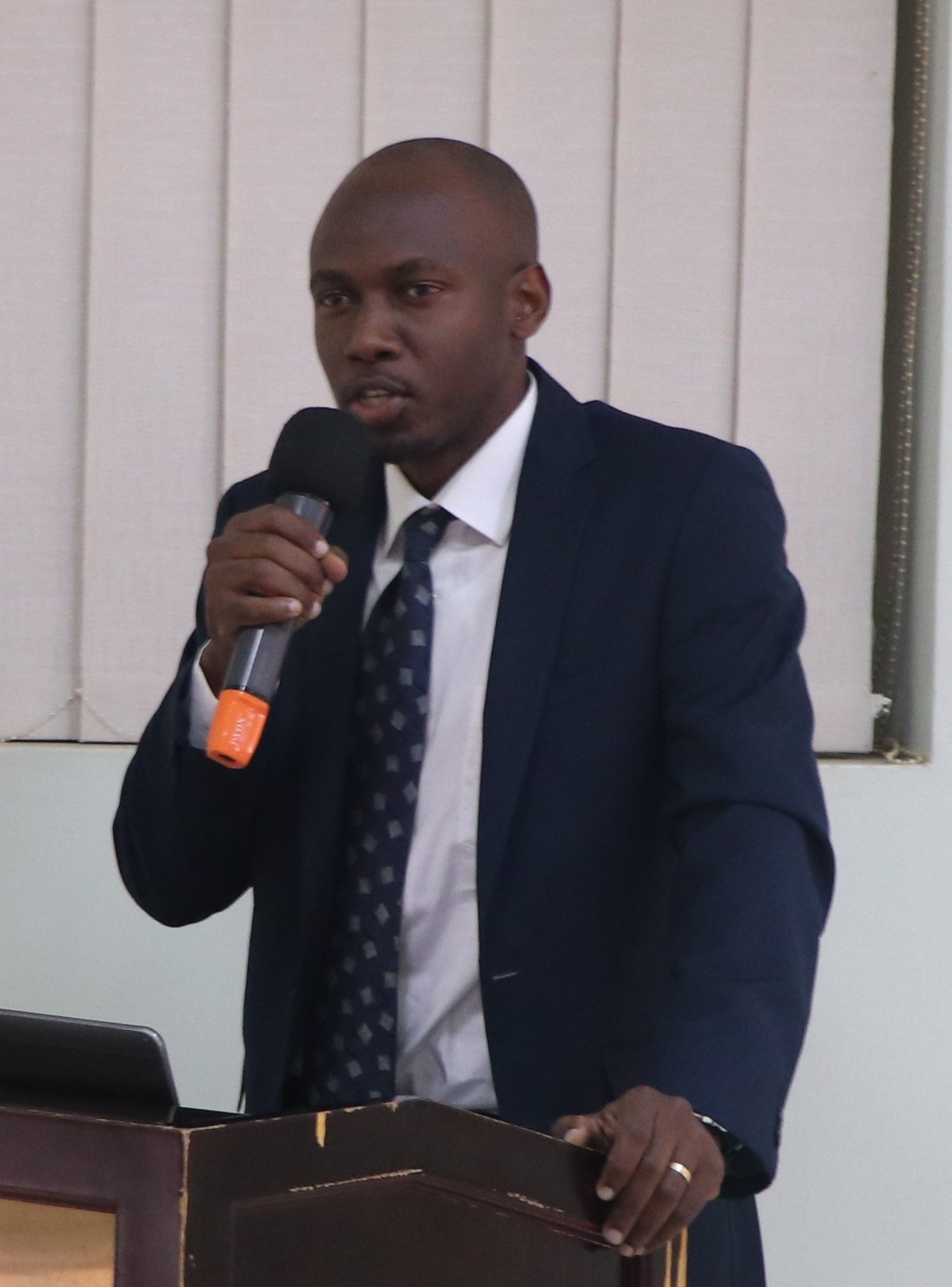
Dr David Musoke (c) speaking to colleagues at MakSPH in 2019. File Photo
Written by Joseph Odoi
As the Ministry of Health plans to introduce new Community Health Extension Workers (CHEWs) in harmony with Alma Ata Declaration on primary health care, Makerere University researchers have called for strengthening of the existing community health system including Village Health Teams (VHTs) who are community volunteers.
In a recently published commentary in BMJ Global Health in August 2020 titled Panacea or pitfall? The introduction of Community Health Extension Workers in Uganda, the researchers say that given two CHEWs have been proposed to be employed per parish (in comparison with four VHTs per village) under the new CHEWs strategy, VHTs would remain crucial in supporting the community health system.
‘’Whereas the proposed two CHEWs per parish would be instrumental in supporting VHTs in an area, they would probably have minimal impact in reaching the vast population in several communities given that some parishes in the country have over 60,000 people. Furthermore, in a parish with over 25 villages, two CHEWs could be working in a geographical location with over 100 VHTs as one village is meant to be supported by four VHTs.’’ explain MakSPH Dr. David Musoke and colleagues.
‘’This situation emphasizes that even with deployment of CHEWs, the role of VHTs remains crucial in supporting the community health system. However, there is likelihood that with the introduction of CHEWs, VHTs would be further neglected if not phased out hence undermining their role in providing PHC and public health services in the community.’’ the paper adds.
In that line, Dr. Musoke and colleagues have called upon MOH to address the VHT concerns so as to benefit the community health system beyond the single cadre of CHEWs. In addition, they noted that the challenges affecting the wider health workforce in the country need to be addressed before the introduction of the CHEWs strategy.
On benefits of the proposed CHEWs noted by the authors is that the new cadre could support the work of VHTs including their direct supervision, data collection and reporting.
‘’Since the CHEWs would spend part of their time at primary health centers, they would not only contribute to supporting community health but also service delivery at health facilities by reducing existing health worker burden.‘’ as noted in the commentary
Moving forward, the researchers including Prof. Peter Waiswa, Rawlance Ndejjo, Edwinah Atusingwize, Charles Ssemugabo, Amanda Ottosson and Linda Gibson therefore proposed for the need for a holistic approach to introduce and adequately support the CHEWs in their work. This implies looking at the community health system in totality including leadership, performance management, financing, access to information and supplies, as well as supporting the existing health workforce (beyond the single cadres of CHEWs).

Background of CHEWs and VHTs
In 2018, the world commemorated 40 years of the Alma Ata Declaration on primary health care (PHC) which emphasized the importance of Community Health Workers (CHWs) in ensuring its vision of health for all. In line with the declaration, Uganda launched a CHW programme in 2001 in an effort to address the high disease burden and critical shortage of health professionals, as well as improve equitable access to health services.
The programme established a cadre of volunteers charged with the responsibility of empowering communities to take control of their own health and well-being, and actively participate in the management of local health services.
These volunteers in Uganda are called Village Health Teams (VHTs) and recognised as ‘health centre I’, being the first contact of the community with the health system.
The main roles of the VHTs include: carrying out health education at household and community levels; conducting house-to-house visits for health improvement; participating in integrated community case management (iCCM) of childhood illnesses of pneumonia, malaria and diarrhoea; referral of patients to health facilities; as well as mobilisation of communities for public health interventions such as immunisation of children and distribution of mosquito nets.
With an interest to strengthen the community health system and further improve health outcomes with emphasis on disease prevention, the MOH commissioned a comprehensive national assessment of the VHT programme in 2015 to establish its status and functionality in order to improve planning and health service delivery to communities
The assessment identified critical gaps in the VHT programme regarding funding, training, supervision and coordination of the programme across all levels of the health system. After the assessment, a desk-based review and benchmarking activity was conducted to gain a deeper understanding of other countries’ experiences.
Using evidence gained, the MOH recommended the introduction of the Community Health Extension Workers (CHEWs) policy and strategy in Uganda, largely modelled after the Ethiopian Health Extension Workers programme.
The CHEWs would be formally institutionalised in the local government healthcare delivery structure, with two of them situated at parish level. The CHEWs are expected to be involved in various promotive, preventive and basic curative services at community and health facility levels
| Attachment | Size |
|---|---|
| Panacea or pitfall? The introduction of community health extension workers in Uganda (229.67 KB) | 229.67 KB |

